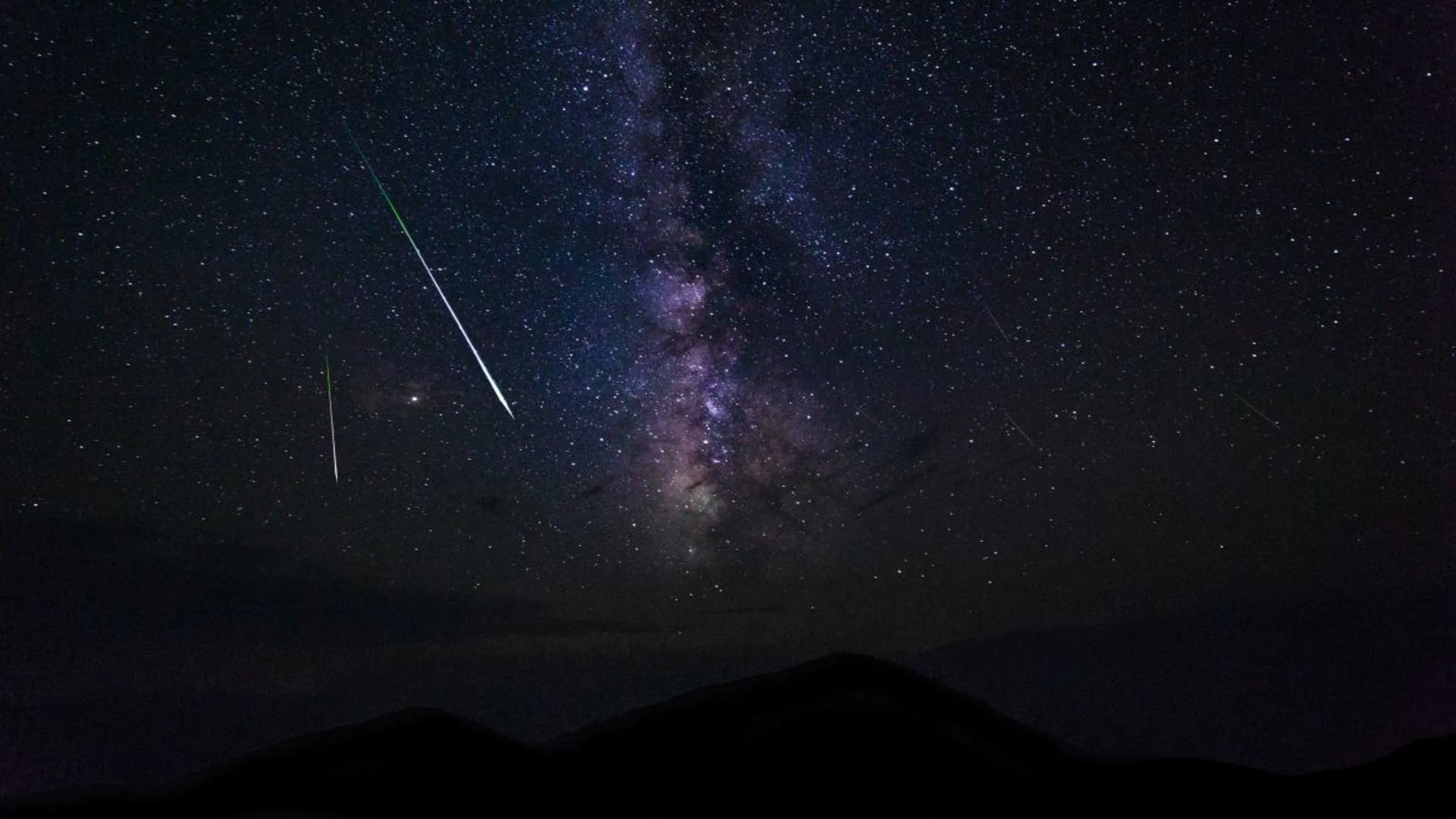
The Perseid meteor shower peaks tonight! Here's how to watch
If you have clear skies tonight, be sure to look up!
The light from a nearly-full Moon will make viewing more of a challenge tonight, but you still won't want to miss out on the peak of the Perseids!
Like clockwork every year, we get a treat in our night skies during the first two weeks of August. Numerous streaks of light flash overhead, putting on a spectacular show that we call the Perseid meteor shower. This meteor shower reaches its maximum, or 'peak', on the night of August 12-13.
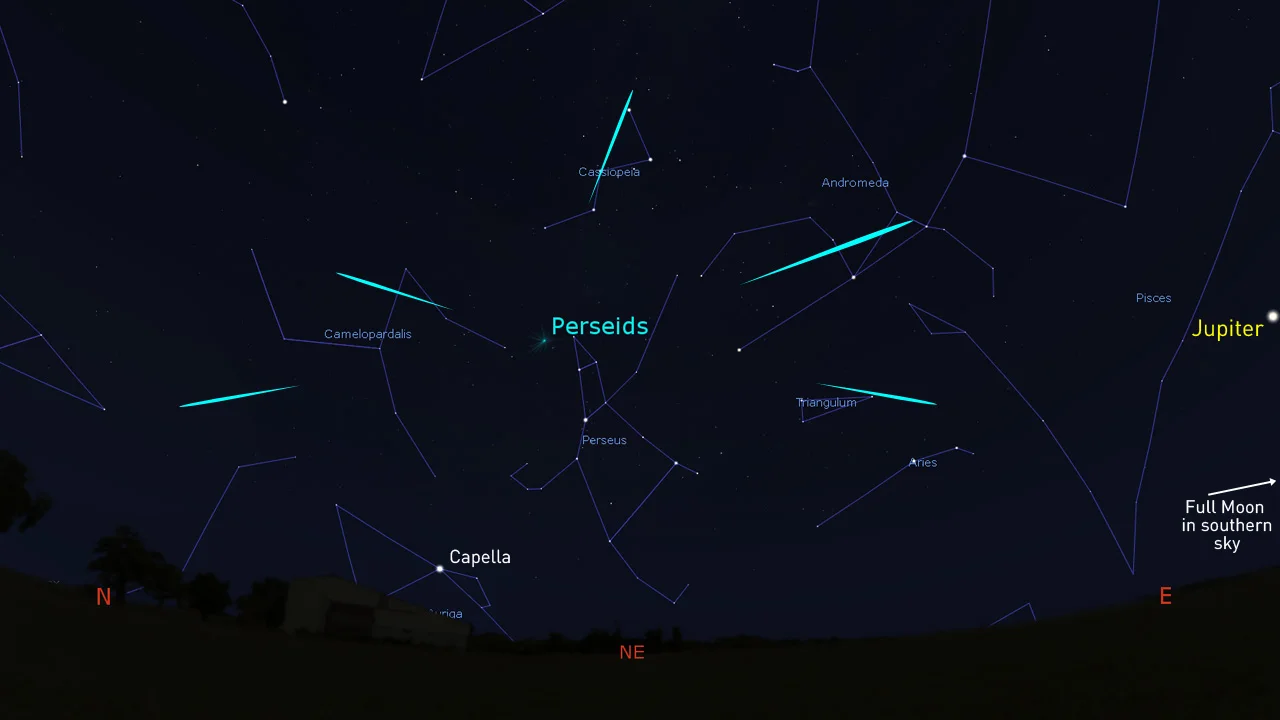
The location of the Perseids radiant — the point in the sky the meteors appear to originate from — at midnight on August 12-13. Credit: Stellarium/Scott Sutherland
Of the dozen or so meteor showers we see each year, the Perseids are among the top three best! While most meteor showers promise around 20-30 meteors per hour, the Perseids regularly deliver more than twice that number.
According to the Canadian Space Agency: "During the peak, typically in the darkest hours after midnight, up to 50 to 80 meteors per hour can streak across the sky. To be even more specific, look up at the sky between moonset and dawn to see the most meteors of the night."
Some years, viewers have spotted up to 100 meteors per hour or even more. Better still, this meteor shower is well known for producing the most fireballs of any of the annual meteor showers. Your typical meteor shows up as a momentary streak of light so fast that you can sometimes question whether you actually saw it. By comparison, fireballs are exceptionally bright and can last for a second or more as they blaze across the sky.
What's going on here?
From mid-July to late August, as Earth travels along its orbit around the Sun, the planet passes through a trail of icy debris in space left behind by a comet known as 109P/Swift-Tuttle.
Discovered in 1862, Comet Swift-Tuttle swings by Earth every 133 years. Its last visit was in 1992, so the comet is now far out, beyond the orbit of Neptune. Still, each year we receive a reminder that it's still out there, in the form of the Perseid meteor shower.
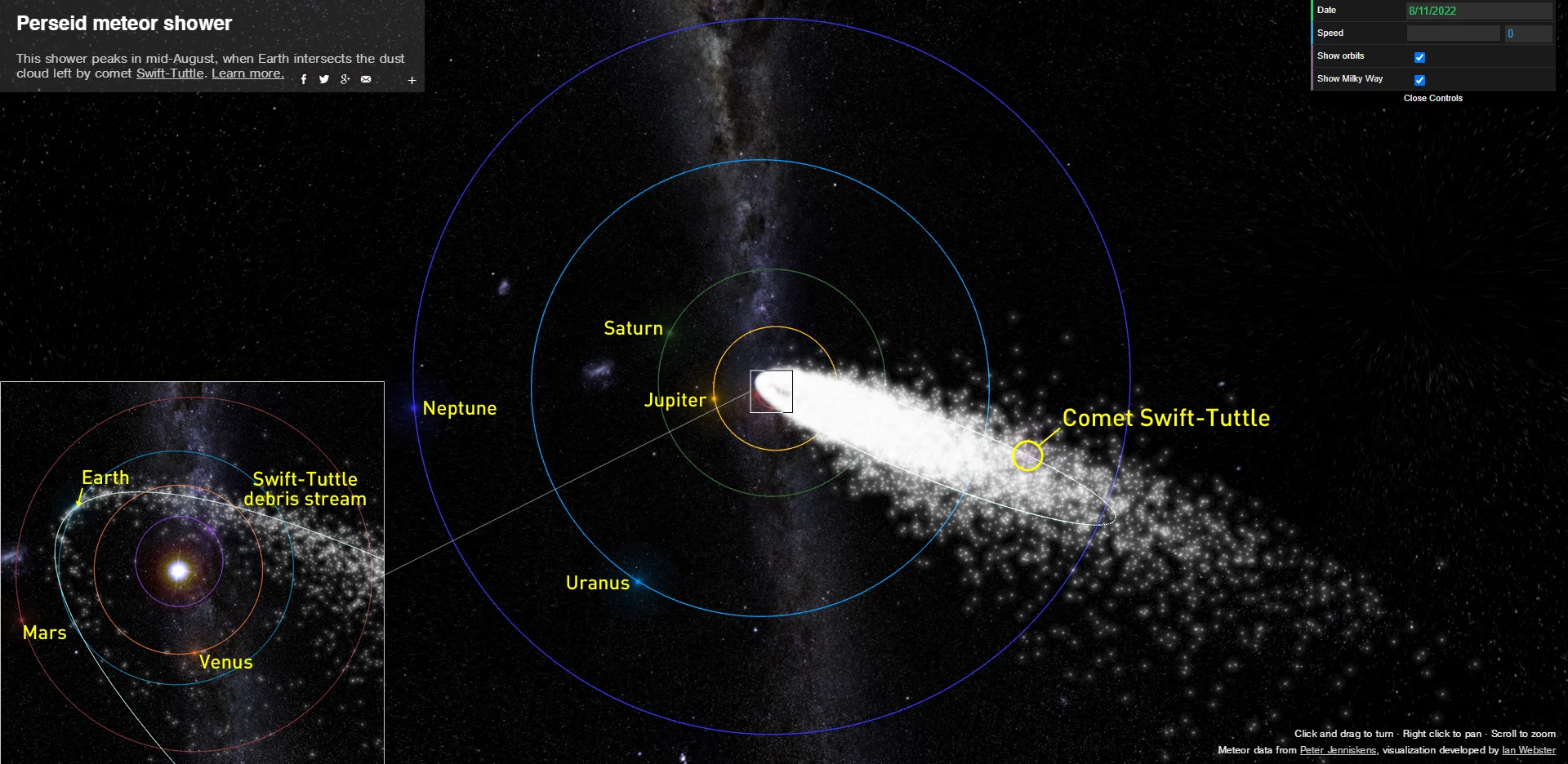
This screen capture from meteorshowers.org shows the debris stream of Comet Swift-Tuttle strewn about its path through the solar system. This stream is the source of the annual Perseid meteor shower. The inset, lower left, features a zoomed-in view of the inner solar system. Credits: Peter Jenniskens/Ian Webster/Scott Sutherland
Swift-Tuttle's debris stream is mainly made up of tiny bits of dust and ice, collectively known as 'meteoroids' or sometimes 'micrometeoroids'.
When these meteoroids get swept up by Earth, they plunge into the upper atmosphere travelling at around 60 kilometres per second. At that speed, they compress the atoms and molecules in their path until the air glows white hot. This glow is the flash of light we call a meteor. Sometimes, depending on what the meteoroid is made of or what part of the atmosphere it flashes through, the meteor flash can also show up in different colours.
Typical meteors wink out in a fraction of a second. This is either because the meteoroid was vaporized or slowed down due to its interaction with the atmosphere.
Watch below: Perseid fireball captured on NASA camera
Fireballs result from slightly bigger meteoroids, perhaps the size of a grain of sand up to a pebble. These can shine so intensely as to rival the brightest objects in the sky and can be seen from hundreds of kilometres away.
Occasionally, a slightly larger meteoroid will plunge into the atmosphere, lighting up the sky as if it were daytime and exploding in an even brighter flash. While these are also typically called fireballs, they also go by the name bolide.
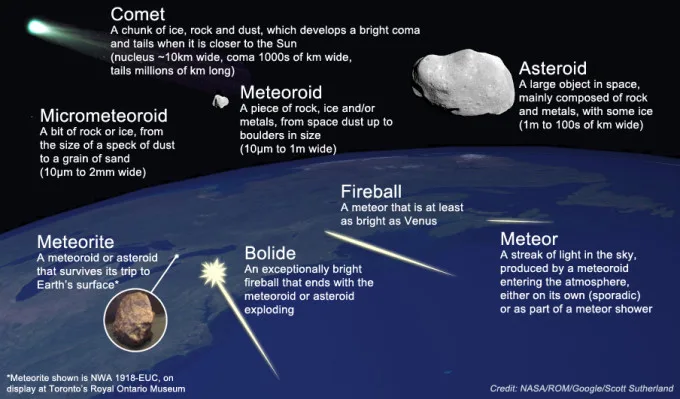
The Moon is a spoilsport
While Perseid meteors tend to be relatively bright and the shower produces a fair number of fireballs, light pollution is still a factor when viewing this event.
Light pollution from urban illumination (street lights, signs, vehicles, etc.) is awful for spoiling meteor showers. The bright lights in our field of view disrupt our night vision, making it difficult to see the flashes of light as they streak across the sky. So, get out of the city to find the best viewing (more tips below). It's not just these artificial light sources, though. The phase of the Moon can make or break a meteor shower display. The best viewing is during a Crescent or New Moon. The worst is when the Moon is full.

The phases of the Moon leading up to the peak of the 2022 Perseid meteor shower. Credit: Scott Sutherland/NASA's Goddard Space Flight Center
This year, the Full Moon rose on the night of Thursday, August 11. With the Perseids peaking just one night after, the light from the nearly-full Moon will still be bright enough to wash out most of the dimmer meteors.
However, don't let that stop you! The Perseids regularly deliver a great show, even if you can't see all of it.
Also, don't feel bad if you miss the show on Friday night. While the number of Perseids does taper off sharply in the days following the peak, they are still visible up until August 27. Additionally, the Moon will rise later and later in the days ahead, giving a good chance to see meteors during the early evening hours.
Tips for viewing meteor showers
Meteor showers are events that nearly everyone can watch. No special equipment is required. In fact, binoculars and telescopes make it harder to watch meteor showers. So, unless you want to look at other things in the sky too, you're better off leaving them at home.
There are a few things to remember so you don't miss out on these fantastic events.
The three best practices for meteor shower watching are:
Check the weather,
Get away from light pollution, and
Be patient.
First, check your weather, because clear skies are essential. Even a few hours of cloudy skies can ruin your chances of watching an event such as a meteor shower. So, be sure to check The Weather Network on TV, on our website, or from our app. Also, look for articles on our Space News page to ensure you have the most up-to-date information.
Next, you need to get away from city light pollution. When you look up into the sky from home, what do you see? The Moon, maybe a planet or two, plus a few bright stars such as Vega, Betelgeuse and Procyon? If that's it, your area has too much light pollution to get the most out of a meteor shower. You might catch an exceptionally bright fireball if one happens to fly past overhead.
Your best bet is to get out of the city. The farther away you can get, the better.
For most regions of Canada, getting away from light pollution is simply a matter of driving outside your community until many stars are visible above your head.
In some areas, especially in southern Ontario and along the St. Lawrence River, the concentration of light pollution is too high. Getting far enough outside of one city to escape its light pollution tends to put you under the light pollution dome of the next city over.
Watch below: How bad is light pollution in southern Ontario and Quebec? Take a look
The best options for getting away from light depend on your location. First, check for dark sky preserves in your area. Some of those even have special viewing events on these occasions.
For those in southwestern Ontario and the Niagara Peninsula, try the shores of Lake Erie for some excellent views. In the GTA and farther east, driving north to seek out the various Ontario provincial parks or Quebec provincial parks is probably your best bet. Even if you're confined to the parking lot after hours, these are usually excellent locations to watch (and you don't risk trespassing on someone's property).
If you can't get away, the suburbs can offer at least a slightly better view of the night sky. Here, the key is to limit the amount of direct light in your field of view. For example, a dark backyard can be great, sheltered from street lights by surrounding houses and trees.
When viewing a meteor shower, be mindful of the phase of the Moon. Meteor showers are typically at their best when viewed during the New Moon or Crescent Moon. However, a Gibbous or Full Moon can be bright enough to wash out all but the brightest meteors. Since we can't get away from the Moon, the best option is just to time your outing right, so the Moon has already set or is low in the sky. Also, keeping the Moon out of your direct line of sight will reduce its impact on your night vision and allow you to spot more meteors.
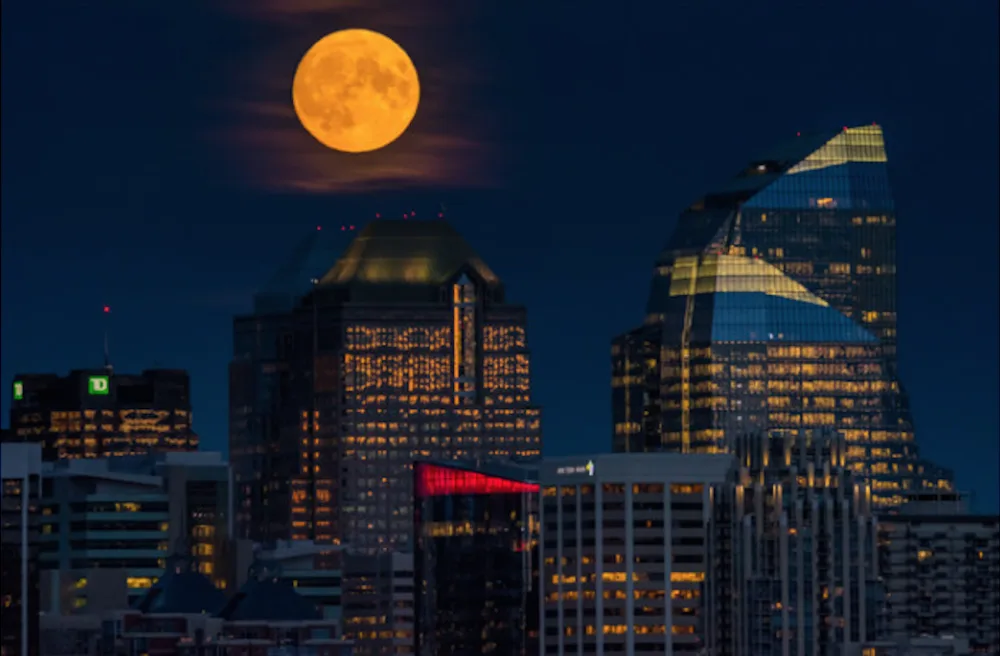
This close-up of the 2019 Harvest Moon was snapped in Calgary, AB. Credit: Siv Heang
Once you've verified you have clear skies and limited your exposure to light pollution, this is where being patient comes in.
Perhaps more than anything else, this is probably the factor that results in the most disappointment when watching meteor showers.
To get the most out of the show, give your eyes at least 20 minutes to adjust to the dark. Avoid bright lights during that time — street lights, vehicle headlights and interior lights, and even your smartphone screen. Switching your phone into "night mode" helps if you need to check it while you wait. Also, if the Moon is up, turn your back to it, keeping it out of your field of view.
You can certainly gaze into the starry sky while letting your eyes adjust. You may even see a few of the brighter meteors as your eyes become accustomed to the dark.
Once you're all set, just look straight up and enjoy the view!
(Thumbnail image courtesy: Austin Human on Unsplash.)






